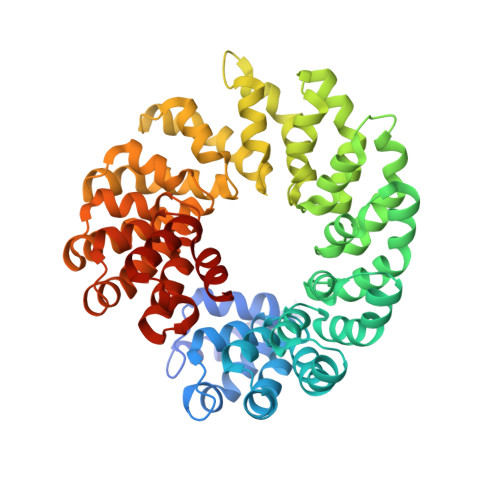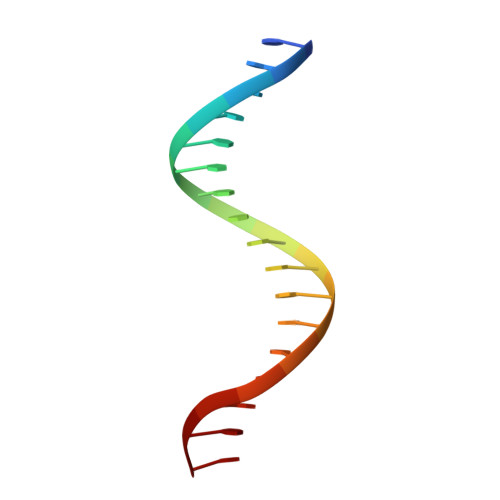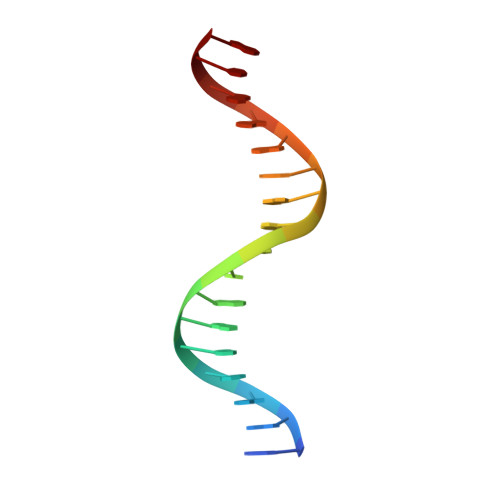Structural Basis for Sequence-Specific Recognition of DNA by TAL Effectors
Deng, D., Yan, C.Y., Pan, X.J., Mahfouz, M., Wang, J.W., Zhu, J.K., Shi, Y.G., Yan, N.(2012) Science
- PubMed: 22223738
- DOI: https://doi.org/10.1126/science.1215670
- Primary Citation of Related Structures:
3V6P, 3V6T - PubMed Abstract:
TAL (transcription activator-like) effectors, secreted by phytopathogenic bacteria, recognize host DNA sequences through a central domain of tandem repeats. Each repeat comprises 33 to 35 conserved amino acids and targets a specific base pair by using two hypervariable residues [known as repeat variable diresidues (RVDs)] at positions 12 and 13. Here, we report the crystal structures of an 11.5-repeat TAL effector in both DNA-free and DNA-bound states. Each TAL repeat comprises two helices connected by a short RVD-containing loop. The 11.5 repeats form a right-handed, superhelical structure that tracks along the sense strand of DNA duplex, with RVDs contacting the major groove. The 12th residue stabilizes the RVD loop, whereas the 13th residue makes a base-specific contact. Understanding DNA recognition by TAL effectors may facilitate rational design of DNA-binding proteins with biotechnological applications.
Organizational Affiliation:
State Key Laboratory of Bio-Membrane and Membrane Biotechnology, Tsinghua University, Beijing 100084, China.
















